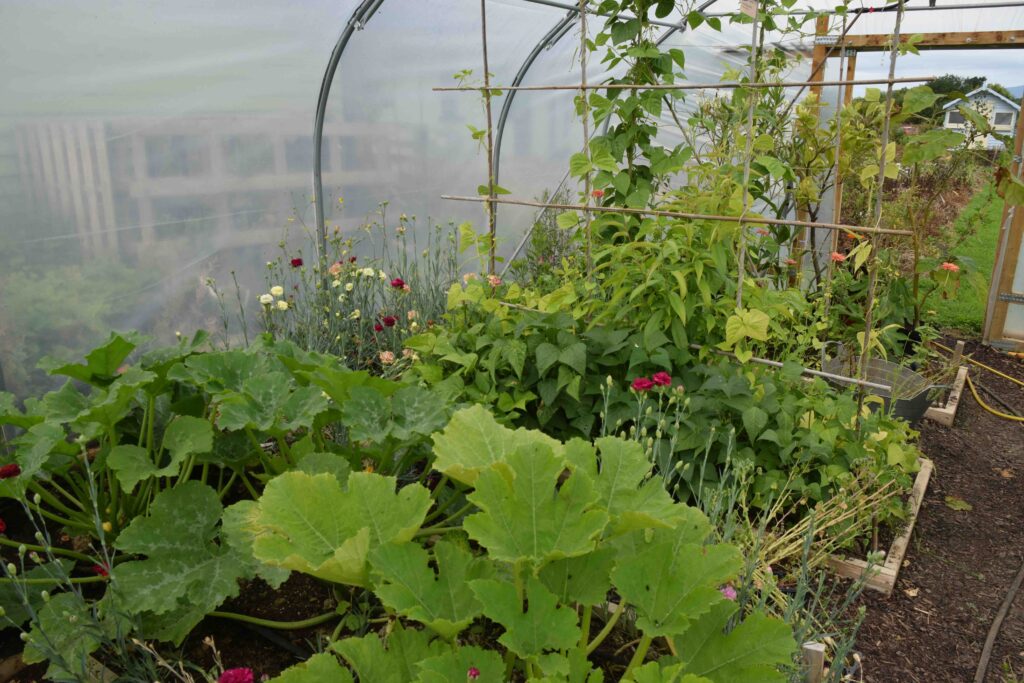
After what has probably been the wettest winter for many years, I am especially appreciative of my polytunnel. It allows me to grow crops all year, to grow crops that need more warmth than our summers usually provide and to keep busy, doing something useful in wet weather.
Polytunnels are not things of great beauty but they are useful and much cheaper than a greenhouse, for the space. Of course, the covers don’t last forever but if you invest in a good one it should last at least five years before it needs to be replaced. Because they are not permanent structures you should be able to put one on an allotment, but check rules first.
It is worth buying the biggest you can afford or make room for. Choose a sunny site, ideally protected from severe winds and on some decent soil. You will need to water in summer too so put it near a water source or where you can get the hose to. Once up you may wish to make raised beds or just plant in the soil. My present tunnel is on some awful soil so I made raised beds so I could improve the soil. It runs east/west to get maximum sun.
Once you have your tunnel you can plant a wide range of crops.
I have a (roughly) fan-trained peach, a fig, three grape vines and a border of alstroemeria for cut flowers. At present there are winter salads and strawberries in growing bags and in summer I grow basil, tomatoes, chillies and various other crops like a few early potatoes, some early sweetcorn and early French beans and potatoes – it is always growing something.
If you do not have room for a full-blown polytunnel you should be able to fit in a mini, plastic greenhouse. These are useful for tomatoes and other summer crops on the patio. On my windy they would not last five minutes but they are perfect for a sheltered patio. They keep plants warm and dry. This can help prevent blight on tomatoes. Peaches are hardy but, in my polytunnel, I can avoid peach leaf curl.
So what can you grow?
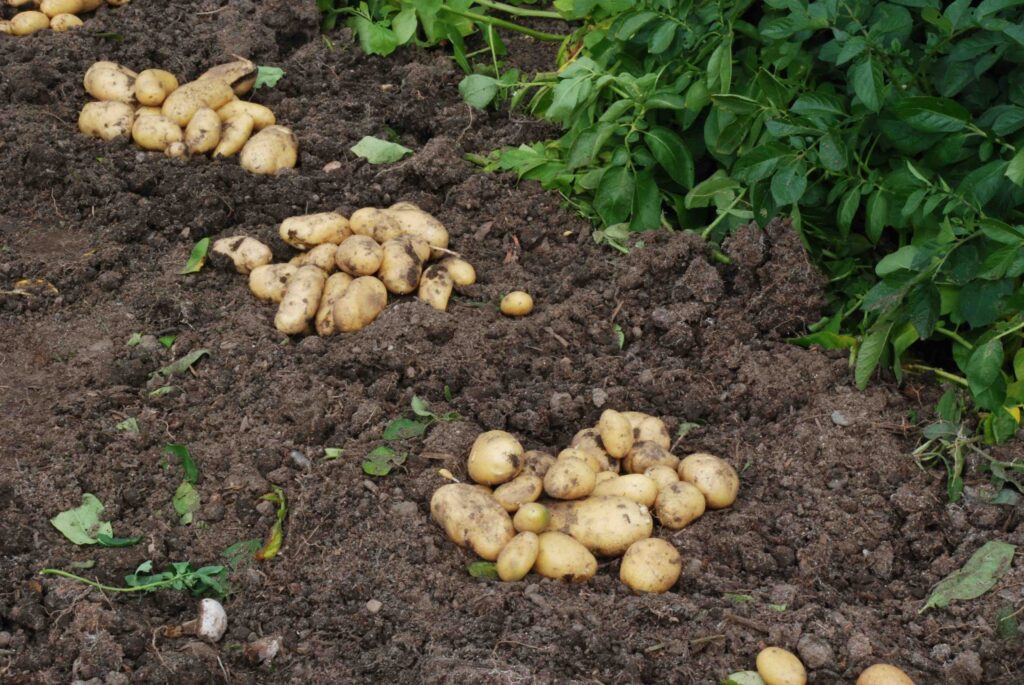
Potatoes
OK, so you can grow potatoes outside. But you can grow them in your polytunnel and, with little chance of the tops being frosted, you can get an early crop, and no risk of blight because you can keep the foliage dry.
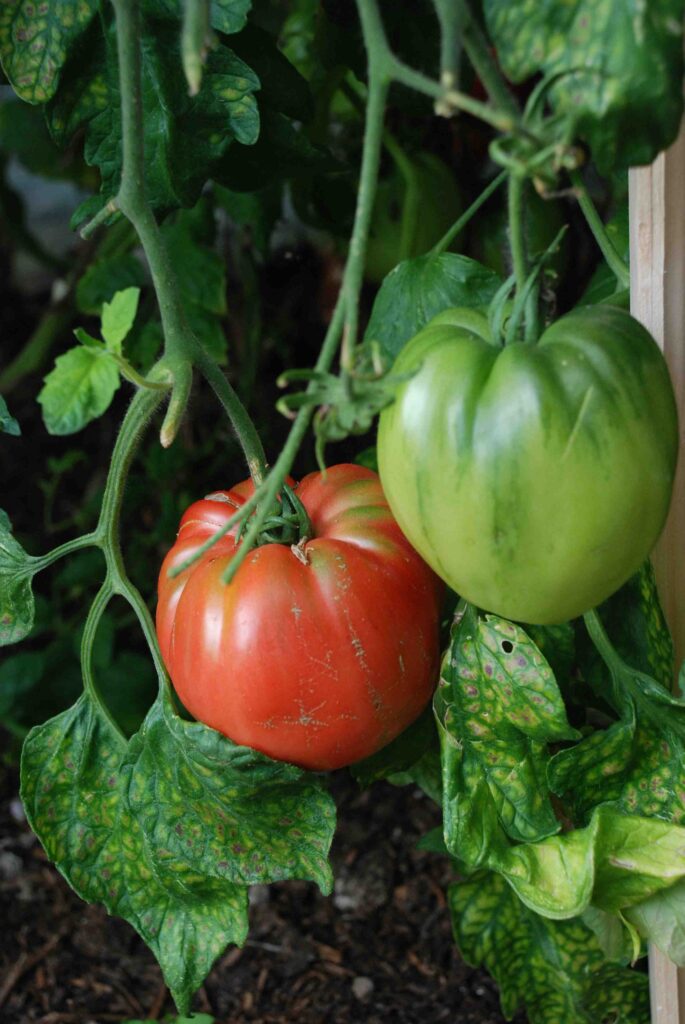
Tomatoes
With the extended growing season in a tunnel you can pick earlier and later than usual. It is also possible to grow varieties that ripen late, such as the beefsteak types. With no risk of blight you can be sure of a good crop. Try tomatillos and Cape gooseberries too.
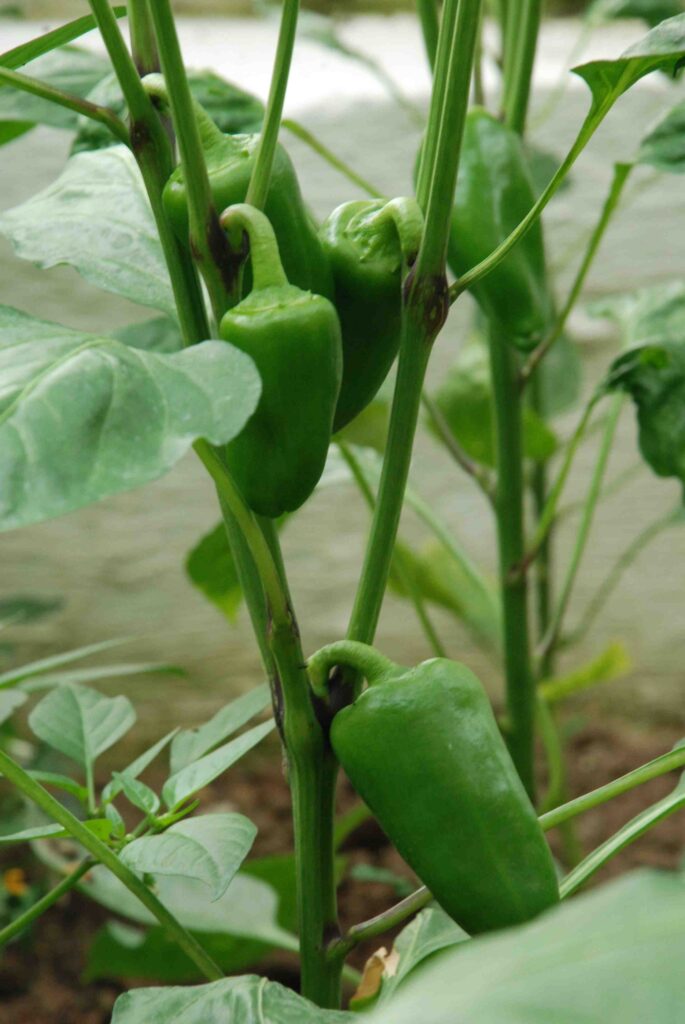
Pepper and chillies
Both crops love warmth and sun and are a gamble outside. But they do well in the tunnel. Only I eat peppers in our household so I tend to just grow some chillies and a batch of Padron peppers, for a taste of Spain.
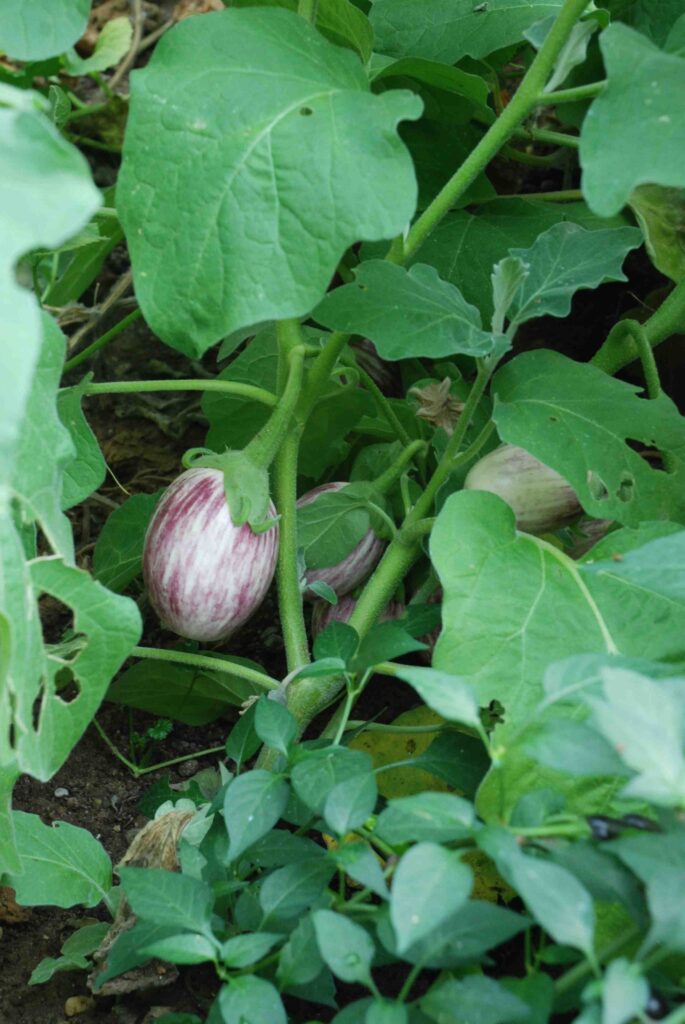
Aubergines
These thrive in a tunnel too but they are not our favourite crop so not a regular feature! Grow what you like to eat!
Cucumbers
Cucumbers tend to prefer more shade and humidity than tomatoes and are not great neighbours. I grow them in the greenhouse instead. But you could easily try cucamelons (easy and prolific) or ‘Crystal apple’ cues (also easy and heavy -cropping).
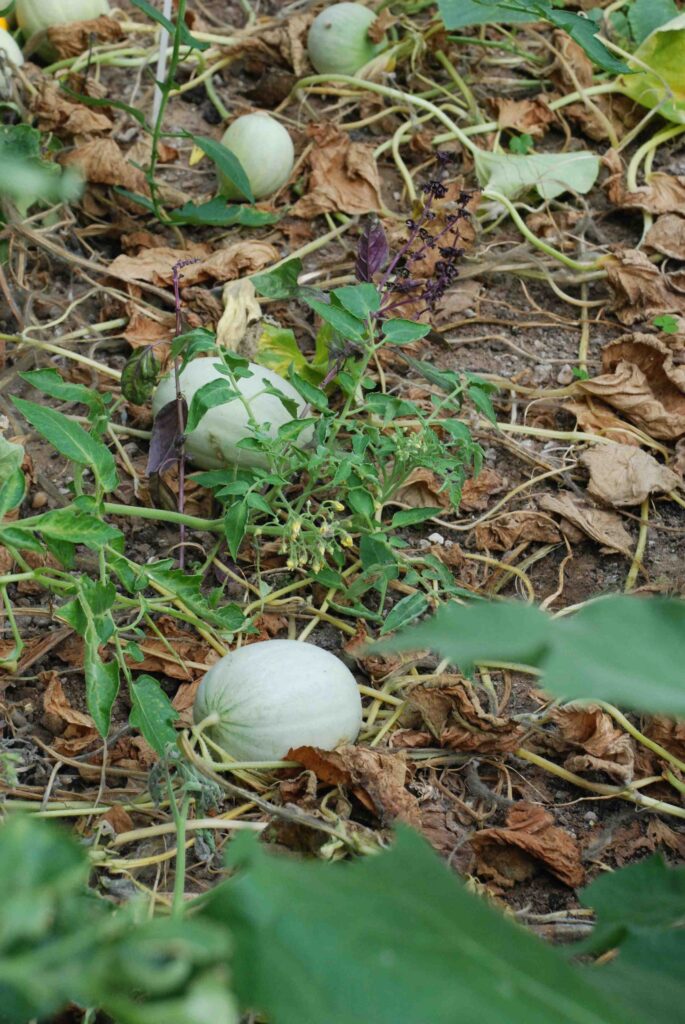
Melons
Melons are rather exotic but worth a try. Buy seeds of varieties that will thrive in the UK and do not save seeds from supermarket fruits. Each plant should produce about four fruits. You can train them up nets or allow them to grow across the ground. Watermelons tend to be more tricky.
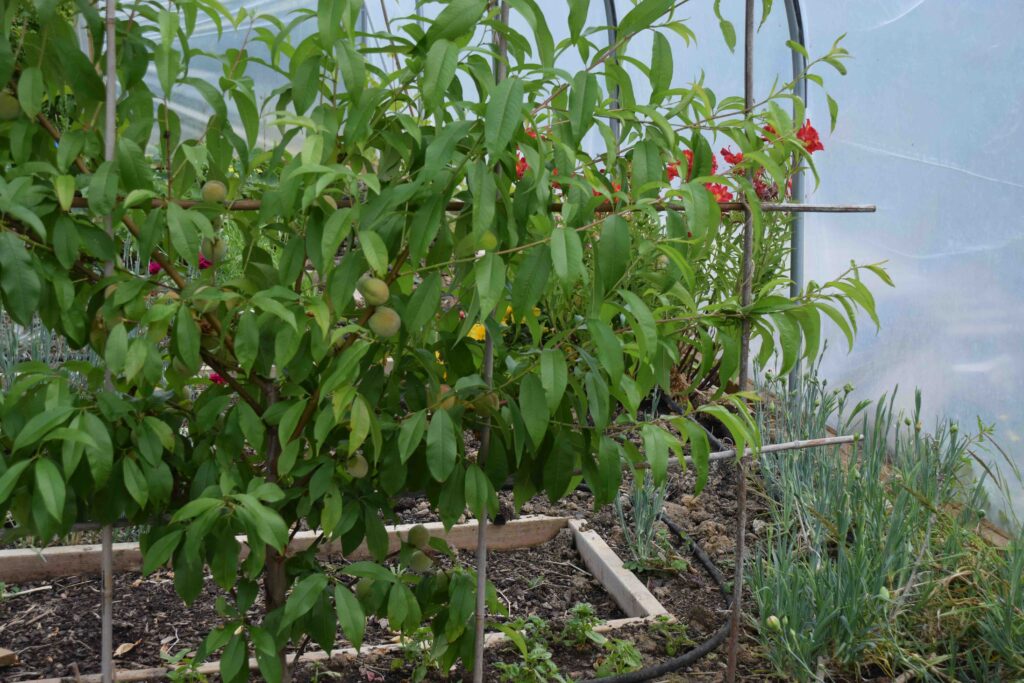
Peaches
Few fruit trees are more rewarding than peaches (and nectarines). You cannot buy peaches that are anywhere near as good as your own. Peaches are self-fertile but they flower early in spring so benefit from hand pollination – not as onerous as it sounds.
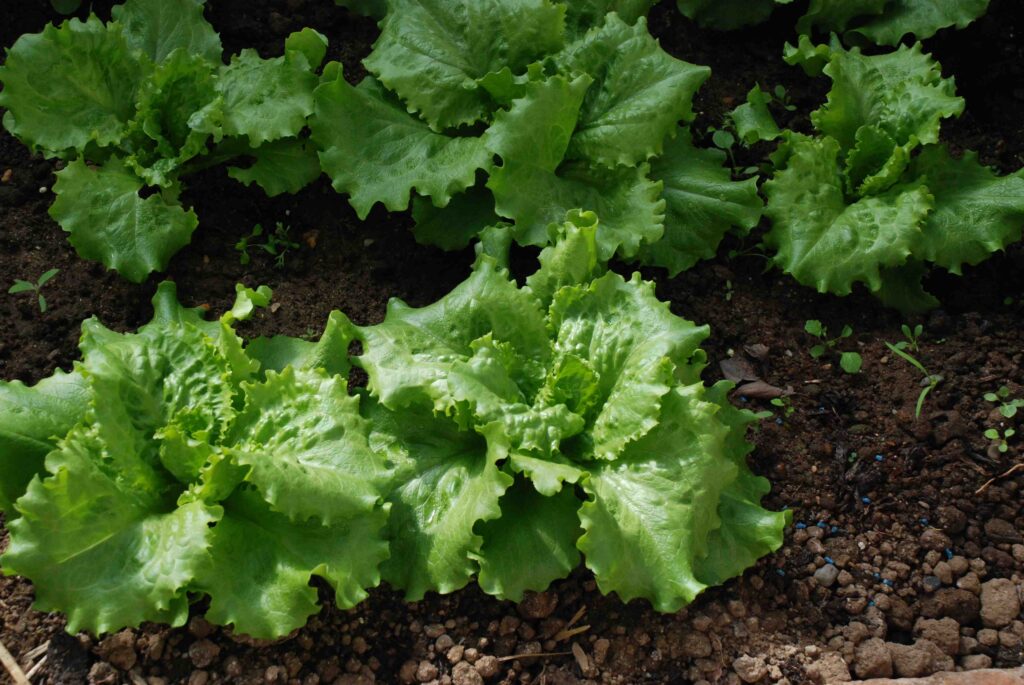
Salad crops
With protection from the coldest weather and controlled water in winter, you can grow all manner of salad crops virtually all year. Corn salad and lettuce, watercress and endives all crop through winter and summer brings a whole new range of tasty leaves.
All these crops also do well in a greenhouse and if you have neither, most do well on the patio in pots too.
You should start to sow seeds of peppers and aubergines next month and tomatoes in March. You can start sowing salad crops as soon as it warms up a bit and you can buy your seed potatoes now and get them chitting.
More on growing potatoes next week